Granite vs. Quartz Countertops
January 28, 2025
Granite vs. Quartz Countertops: Which One is Right for Your Home?
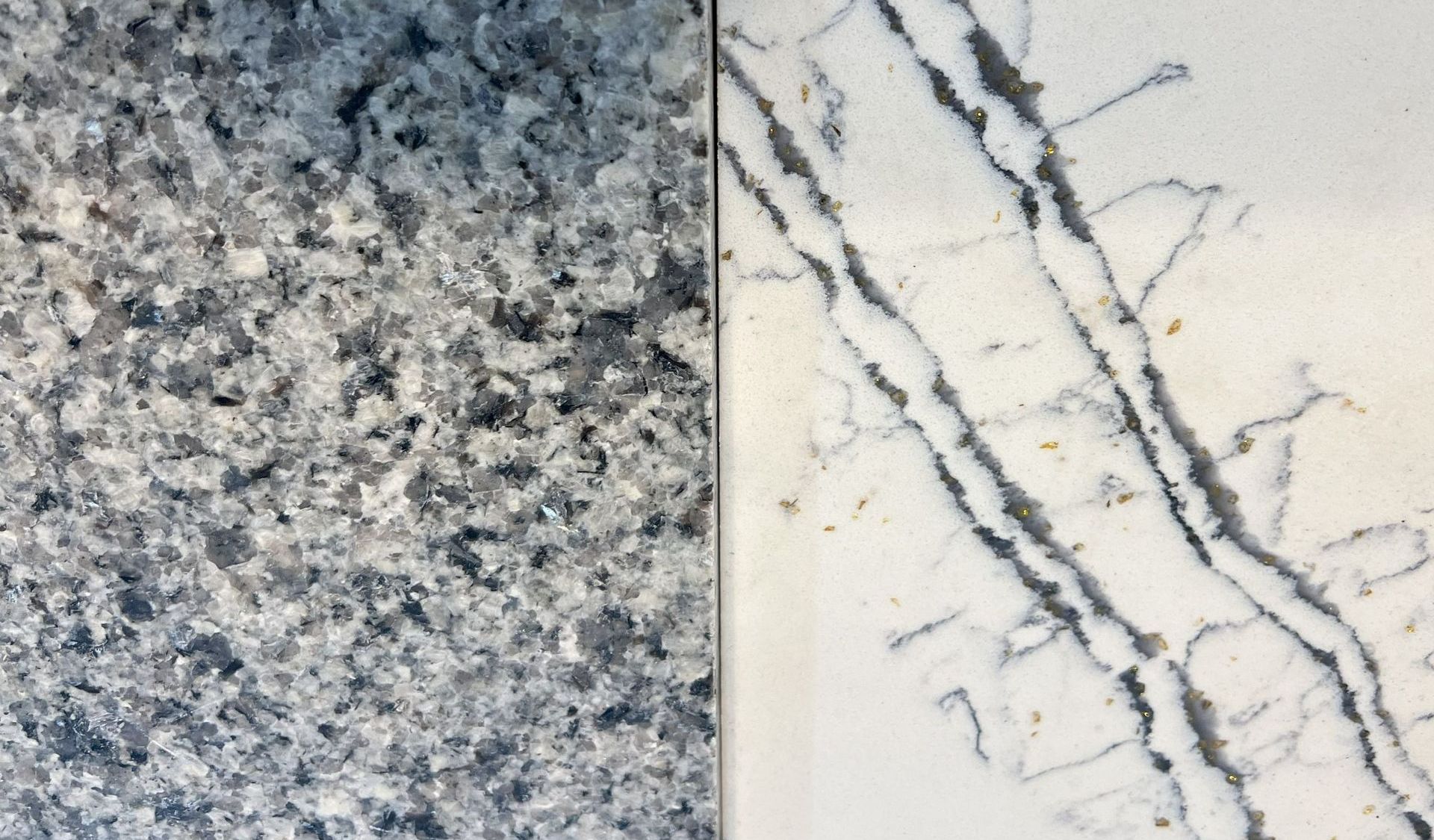
When it comes to upgrading your kitchen or bathroom, choosing the right countertop material is one of the most important decisions you'll make. Among the most popular options are granite and quartz countertops. Both are beautiful, durable, and high-end materials, but they have distinct differences that may sway your decision. In this post, we'll compare granite countertops versus quartz countertops, examining their pros and cons to help you decide which one is the best fit for your home.
Cons of Quartz Countertops
Granite Countertops: Nature's Beauty
Granite is a natural stone that is cut from quarries, then polished and finished for use in your home. Each granite slab is unique, showcasing stunning patterns and vibrant colors that come straight from nature.
Pros of Granite Countertops
- Durability: Granite is one of the hardest natural stones, making it incredibly durable. It’s resistant to scratches, chips, and cracks, which is ideal for high-traffic kitchens and busy households when properly maintained.
- Heat Resistance: Granite countertops can withstand high temperatures, meaning you can place hot pots and pans directly on them without worrying about damage.
- Unique Aesthetic: Every granite slab is one of a kind. The variations in color and pattern give your countertop a unique, personalized touch. If you want something truly distinctive, granite is an excellent option.
- Long-lasting Investment: When properly maintained, granite countertops can last a lifetime. This makes them a worthwhile investment for any home.
- Increase Home Value: High-end materials like granite add value to your home, which can be especially beneficial if you're looking to sell.
Cons of Granite Countertops
- Porous Surface: While granite is generally resistant to stains, it’s still a porous material. Spills, especially from acidic substances like wine or citrus juice, can seep into the surface if not wiped up quickly. Sealing your granite countertop regularly can help prevent this, but it’s an extra maintenance step.
- Cost: Granite is on the expensive side. Prices vary depending on the color and quality of the slab, but generally, it’s a higher-cost material compared to other options.
- Heavy Material: Granite is quite heavy, which can make installation more complicated and expensive. It also requires proper support to avoid damage to it or your home.
- Limited Color Range: Although beautiful, the color options are somewhat limited compared to quartz. If you’re looking for a specific shade or pattern, granite might not always offer what you want.
Quartz Countertops: Engineered for Perfection
Quartz countertops are engineered stone products made from a blend of natural quartz crystals and resins. This composition allows for a wide range of colors, patterns, and finishes that are consistent across the entire surface.
Pros of Quartz Countertops
- Low Maintenance: Unlike granite, quartz countertops don’t need to be sealed because the resins used in their creation make them non-porous. This means you don’t have to worry about stains from spills or food.
- Consistent Look: If you're aiming for a countertop with a uniform color or pattern, quartz is the way to go. The engineered nature of quartz means every slab looks identical, providing a sleek and contemporary appearance.
- Durability: Quartz is also highly durable, though slightly softer than granite. It resists scratches, chips, and cracks well, though not as strongly as granite. It’s also heat-resistant, though you may still want to use trivets or hot pads to protect the surface.
- Wide Variety of Colors and Designs: Quartz countertops come in a broad range of colors and patterns, including designs that mimic natural stone like granite or marble. This gives you more design flexibility and creative freedom in your kitchen or bathroom remodel.
- Eco-Friendly Options: Some brands of quartz countertops use recycled materials in their manufacturing process, making them a more eco-conscious choice compared to granite.
Cons of Quartz Countertops
- Not as Heat Resistant: While quartz can handle normal kitchen heat, it’s not as heat-resistant as granite. Placing extremely hot pots and pans directly on quartz may cause discoloration, surface damage, or warping.
- Not Scratch-Proof: Although quartz is tough, it’s not completely scratch-proof. Sharp knives or rough handling can leave marks on the surface, so it's recommended to use cutting boards and avoid dropping heavy objects.
- Artificial Look: Some homeowners prefer the natural look of granite, as the patterns in quartz are created during the manufacturing process. While there are beautiful quartz options, the aesthetic might not appeal to those who want something that feels purely organic and natural.
- Cost: Like granite, quartz countertops can be expensive, especially for premium options with intricate patterns or colors. However, prices can vary based on brand, color, and installation costs.
How to Choose Between Granite and Quartz
Both granite and quartz offer incredible benefits, but the choice between them ultimately depends on your priorities and lifestyle. Here are a few things to consider when making your decision:
- Maintenance: If you prefer a low-maintenance countertop that doesn’t require sealing, quartz is the better option.
- Aesthetic: If you're drawn to natural stone and want a one-of-a-kind look with rich variations, granite is perfect. However, if you prefer a more consistent and customizable appearance, quartz offers a wider range of designs.
- Durability: Both materials are durable, but granite is more heat-resistant and scratch-resistant. If your kitchen sees a lot of cooking activity, granite might hold up better in the long run.
- Budget: Both options can be pricey, but quartz generally offers more affordable options than high-end granite. However, premium quartz can still exceed the price of budget-friendly granite.
Conclusion
In the granite vs. quartz debate, there’s no clear "better" option; it really depends on your needs. If you want the durability and beauty of natural stone, along with a one-of-a-kind pattern, granite is a fantastic choice. If you prefer a low-maintenance, consistent surface with a wide variety of colors and patterns, quartz is your best bet.
Ultimately, the decision comes down to what works best for your kitchen, your lifestyle, and your budget. Both materials will elevate your space, so you can’t go wrong with either one!
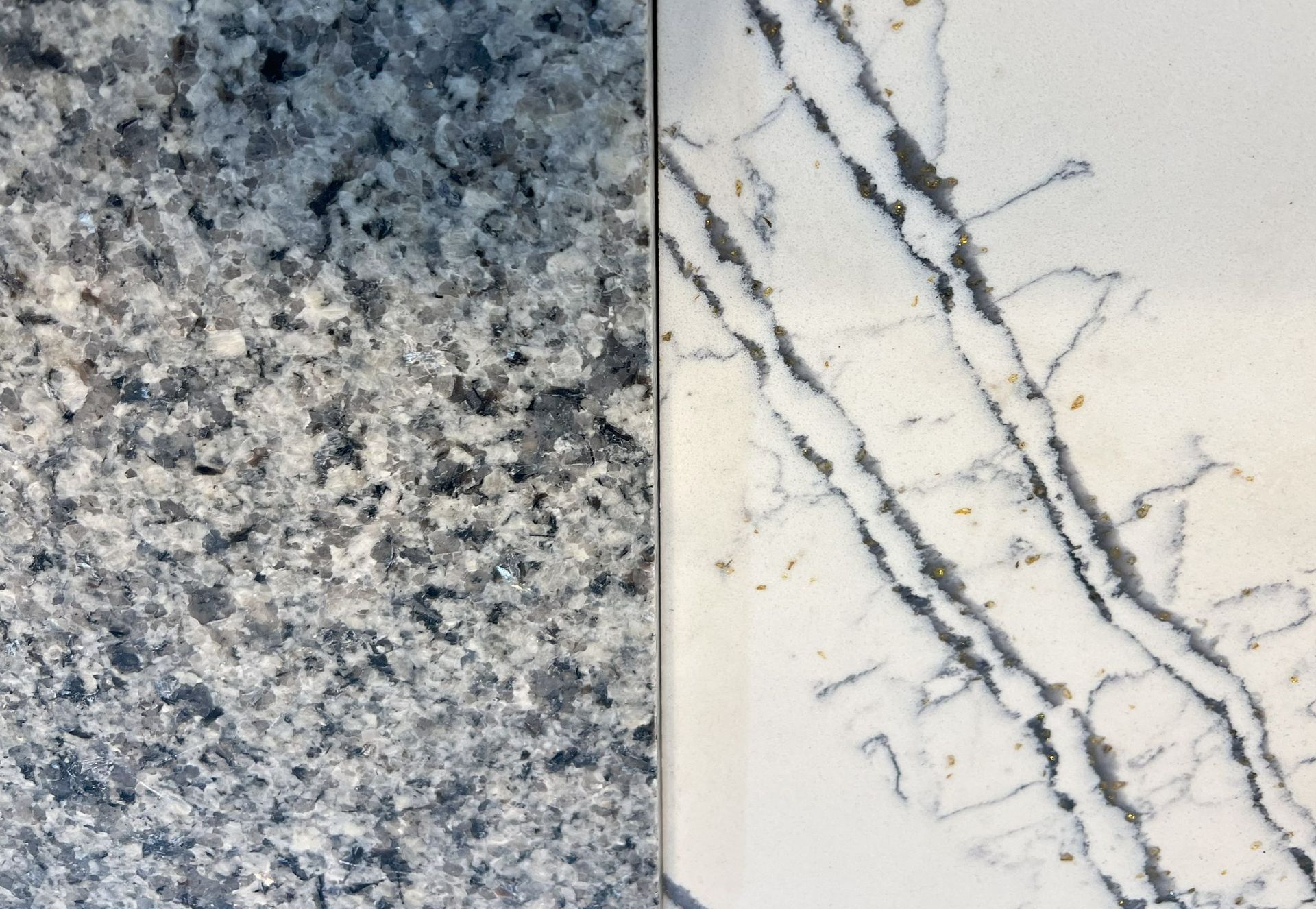
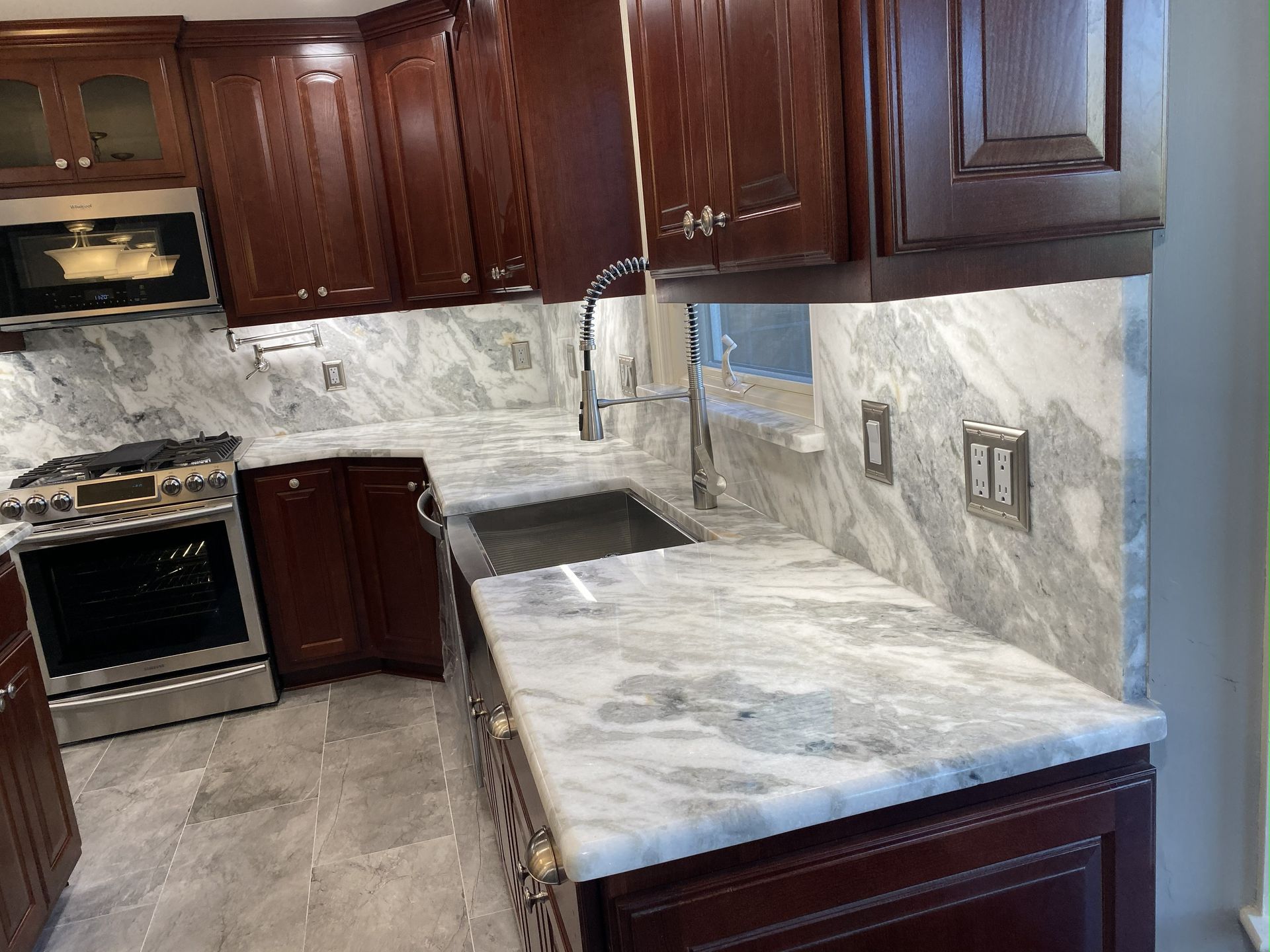
Granite is one of the most popular choices for kitchen and bathroom countertops—and for good reason. It's durable, beautiful, and timeless. But like any natural stone, granite needs a little care to keep it looking its best. One of the most important steps in maintaining granite countertops is sealing them. In this post, we’ll walk you through the basics of sealing granite, why it’s so important (especially for countertops that get regular use), and how MGL Granite can help. Why Does Granite Need to Be Sealed? Granite is a natural stone with a porous surface. That means that if it's left unsealed, liquids like water, oil, wine, or juice can seep into the stone, causing stains or even long-term damage. Bacteria can also find their way into those tiny pores, which isn’t something you want on your food prep surfaces. Sealing your granite countertops helps create a protective barrier that: Repels moisture and spills Prevents staining Makes cleaning easier Extends the life and beauty of your countertops How Often Should You Seal Granite? It depends on the type of granite, how much use your countertops get, and the type of sealer used. Some granite varieties are denser and require sealing less often, while others are more porous and need more frequent attention. As a general rule: Seal high-use kitchen countertops once a year. For less frequently used areas (like guest bathrooms), every 2–3 years may be enough. Pro Tip: Not sure if it's time to reseal? Drip a few drops of water on the surface. If it beads up, you're good. If the water soaks in, it's time to reseal. How to Seal Granite Countertops: Step-by-Step 1. Clean the Surface Thoroughly: Wipe down your granite with a gentle stone cleaner or warm soapy water. Remove all residue and let it dry completely before sealing. 2. Choose the Right Sealer: Use a granite-specific penetrating (or impregnating) sealer that soaks into the stone to provide long-lasting protection. 3. Apply the Sealer: Follow the instructions on the label. Typically, you'll a pply the sealer evenly with a clean cloth or applicator pad. Let it absorb for about 15–20 minutes. Wipe off any excess with a clean, dry cloth 4. Let It Cure: Most sealers cure within 24 hours. During this time, avoid using the surface or getting it wet. Want a Professional to Handle It? We've Got You Covered! At MGL Granite, we don’t just install granite—we help you maintain it. We offer professional granite sealing services, so you don’t have to worry about the mess or guesswork. Whether you need sealing for a newly installed countertop or want to refresh an older surface, we’re here to help. Keep Your Granite Looking Great for Years Sealing your granite countertops is a simple step that goes a long way in protecting your investment. With regular maintenance—or a visit from our team—you can enjoy the beauty and durability of your countertops for decades to come. Contact us today to schedule your sealing service or ask about the best care plan for your countertops!

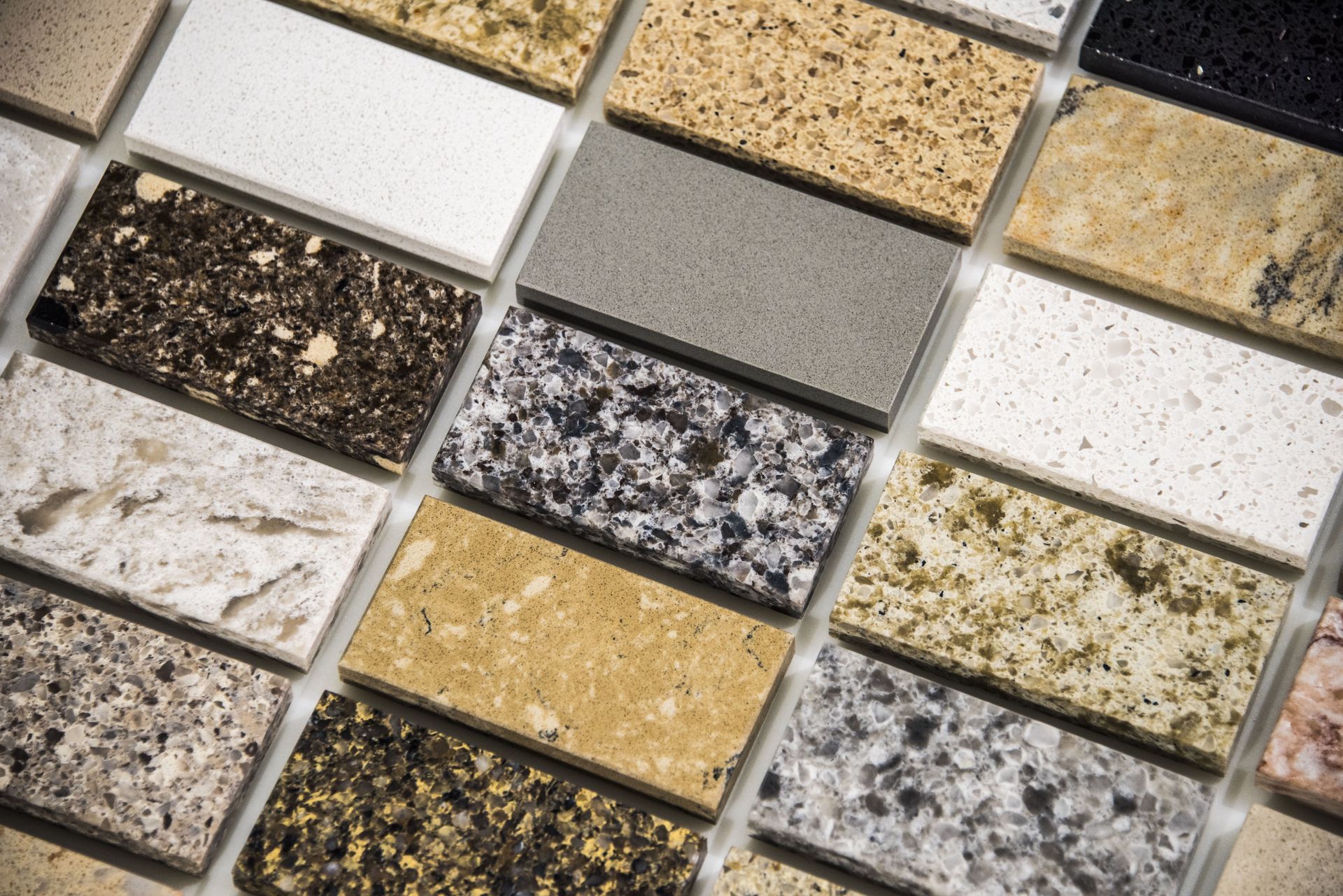
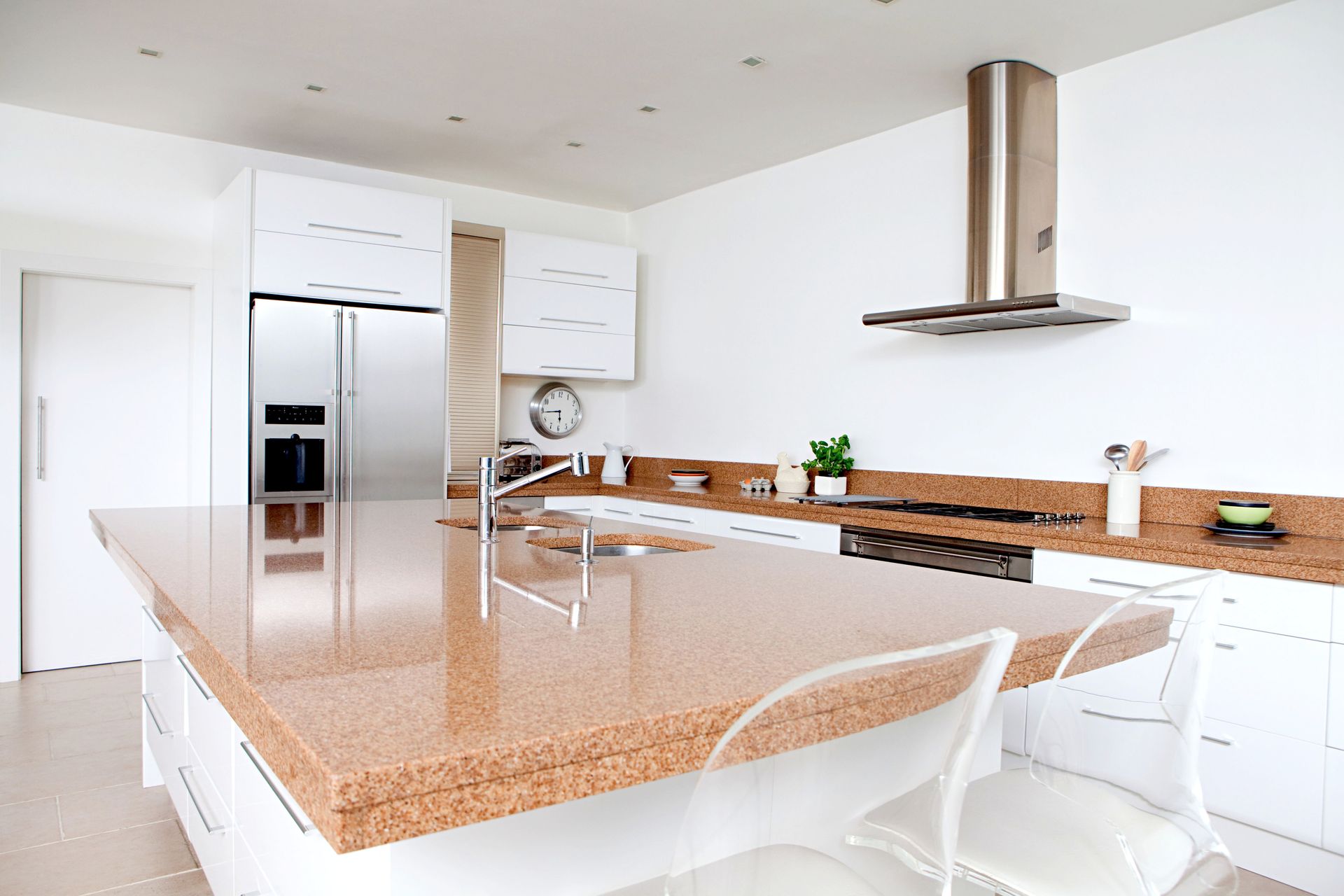

Share On: